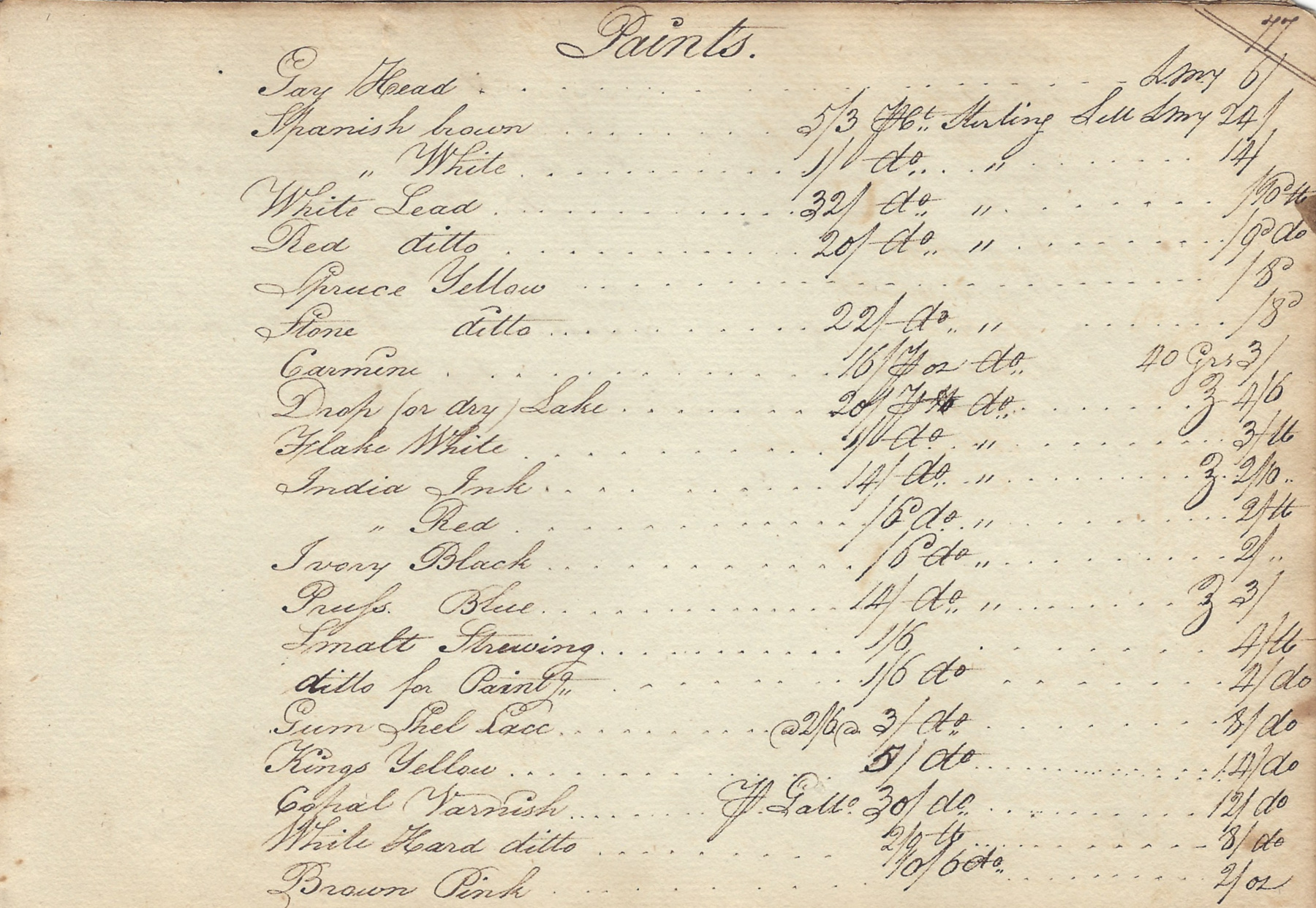The Unpublished, Detailed Manuscript Pharmacopoeia of the First Early American Pharmacy Between New York and Boston, Listing Medicines, Trade Secrets, Procedures, and Finances, Dated and Compiled by the Shop’s Employee










Public records show only one other such apothecary manuscript from the second half of the 18th century reaching the public market
This is a great rarity from this period, and a treasure of information on medicine in the earliest days of the United States
By 1721 there were a handful of apothecaries in the colonies. The first “commissioned pharmaceutical officer in an American army” was the Boston apothecary, Andrew Craigie. A sort of...
This is a great rarity from this period, and a treasure of information on medicine in the earliest days of the United States
By 1721 there were a handful of apothecaries in the colonies. The first “commissioned pharmaceutical officer in an American army” was the Boston apothecary, Andrew Craigie. A sort of warrior-apothecary, he took part in the Battle of Bunker Hill on June 17, 1775. And when Congress reorganized the Medical Department of the Army in 1777, Craigie became the first Apothecary General.
English economic historian Bernice Hamilton describes the 1700s as having “completely transformed” all “the medical professions,” explaining that “advances in medical education and science,” the emergence of a robust middle class, “as well as the growth of ‘a professional feeling”” had greatly changed the socio-economic order by the end of the 18th century. Thanks to the ruling in the Rose Case back in London, apothecaries began 1705 as fully accredited medical professionals who could write prescriptions. Hamilton notes “…the apothecaries, once mere tradesmen and the ‘servants of the physician,’ had become practicing doctors,” treating patients directly. These trends spread to the colonies. Pharmacopoeias were manuscripts or printed works offering basics and compounding instructions. They were guides to the tools and methods of the apothecary.
Joshua Lathrop graduated from Yale in 1743, and with his brother Daniel opened the first apothecary shop in Connecticut and the first one between Boston and New York. In 1776, the apothecary firm, which was in Norwich, changed its name to Lathrops & Coit when their nephew Joseph Coit joined the business. Lathrop’s wife was the daughter of Nathaniel Eells and Cushing Eells was his nephew. He hired Cushing to help in the shop. Cushing later helped Lathrop expand into textile manufacturing.
As a point of interest, Benedict Arnold got his first major employment in this firm and was valued for his mathematical skills. The Lathrops helped him open his own business after his apprenticeship.
Document signed, January 1, 1791, by Cushing Eells, the pharmacopoeia manuscript book of the firm of Lathrop & Coit, the sole pharmacy between New York and Boston, unpublished, 20 x 14.5 cm. Original calf, worn, boards detached and pages loose but in good condition.
The manuscript contains valuable recipes, trade secrets, and interesting finances of Coit & Lathrop.
Pages 9-46 list medicines and their formulas in great detail, much in Latin.
Page 50-76 contain as described here: “The Following is a Catalogue of Drugs and Medicine usually kept for sale by Messrs. Coit & Lathrop with the Sterling cost affixed from their latest importations: likewise the prices at which they sell”; paint is pages 76-78, pages 80-82 list “Groceries”, “Wine”, and “Glass & Earthen”. Pages 83-84 list “Shop furniture & Laboratory Instruments”; pages 85-87 “Chirurgical [surgical] Instruments.”
The business changed its name to Lathrop & Eells in 1793.
This is a great rarity from this period and a treasure of information on medicine in the earliest days of the United States.

Frame, Display, Preserve
Each frame is custom constructed, using only proper museum archival materials. This includes:The finest frames, tailored to match the document you have chosen. These can period style, antiqued, gilded, wood, etc. Fabric mats, including silk and satin, as well as museum mat board with hand painted bevels. Attachment of the document to the matting to ensure its protection. This "hinging" is done according to archival standards. Protective "glass," or Tru Vue Optium Acrylic glazing, which is shatter resistant, 99% UV protective, and anti-reflective. You benefit from our decades of experience in designing and creating beautiful, compelling, and protective framed historical documents.
Learn more about our Framing Services





















































































































